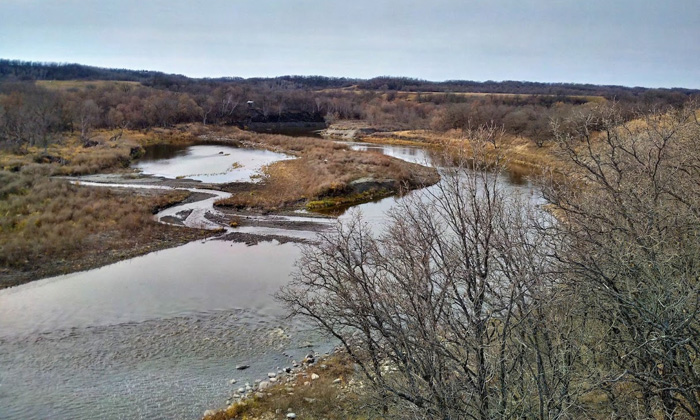Manitoba Transportation and Infrastructure’s Hydrologic Forecast Centre is monitoring a forecasted weather system that could bring significant snowfall to most central and western Manitoba basins.
The weather system could bring 10 to 40 centimetres of snow, with east winds gusting up to 60 kilometres per hour in portions of western, southwestern and central Manitoba. Areas south of Swan River to the Canada-U.S. border, including the Parkland and Interlake regions, and west of Winnipeg to the Manitoba-Saskatchewan border are expected to be impacted by the system. Some localized areas could receive higher amounts of snow accumulation as the weather system passes through Manitoba watersheds starting Wednesday and ending Thursday.
The centre is assessing the impact of this forecasted precipitation system on flows and levels along Manitoba rivers and lakes as the system continues to develop. The centre reports that while most tributaries have already peaked or are near their peak within these impacted areas, flows and levels continue to rise in major rivers, including the Red and Assiniboine rivers. Run-off from the forecasted precipitation system is not expected to start until the weekend, as temperatures in most areas will cool below the freezing point until Friday.
The Portage Diversion is now in operation to minimize the effects of ice jamming on the Assiniboine River east of Portage la Prairie and to control river levels in Winnipeg and areas along the Assiniboine River downstream of Portage la Prairie.
Operation of the Red River Floodway is also expected this spring to reduce water levels within Winnipeg.
The Manitoba Emergency Measures Organization (EMO) continues to work with all local authorities and emergency management partners to provide guidance and support to prepare and respond to the spring flood. This includes reviewing existing emergency plans, information sharing and preparing resources used in flood response. Additionally, Manitoba EMO continues to work with Indigenous Services Canada to support its response measures with First Nation communities.


